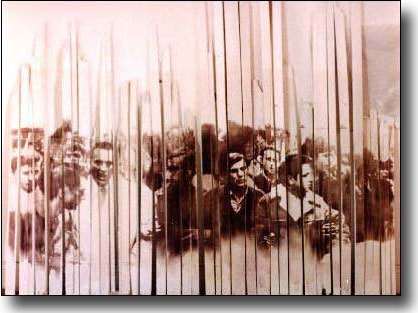Art Museum of the Americas, Organization of American States,
Feb 04, 2001 - Mar 30, 2001
Washington, D. C., USA
Public Order on view at Art Museum of the Americas
by Cynthia MacMullin
The Art Museum of the Americas, Washington D.C., presents the exhibition, Public Order, by Argentinean artist, Graciela Sacco, February 4 - March 30, 2001. Over a dozen digital images on paper and heliographic works on wood or metal are displayed from several series of important works - Fire and Vesper / El Incendio y Las Visperas, 1996-2000; Mouthful / Bocanada, 1996; and City of Fear 3,4,7-12 / Ciudades del miedo III,IV, VII-XII, 2000. Several of these works have been previously created and exhibited in solo and group exhibitions mounted in either Buenos Aires, Argentina; Havana Bienal, 1997, Cuba; Mexico City, Mexico; Caracas, Venezuela; Paris, France; and Sao Paulo Bienal, 1996, Brazil. Graciela Sacco, born Argentina, 1957, is a photographer, video and installation artist whose work with heliography, investigates historic and current events and issues that face everyday life. Her art is most particularly concerned with socio-political themes of hunger, poverty, freedom of speech, injustice and civil unrest that has occurred throughout the history of Argentina, and other nations. Through powerful photographic "images of memory" she projects revealing images and details of urban protest, political marches, labor strikes, and civil riots upon objects of daily use. Utilizing public and historic images from newspapers, personal family albums, or other sources, scenes of urban violence transcend their specific histories, but remind us of South American political tensions, and the period of the "disappeared ones" during Argentina’s political repression of the 1960s and 70s. Sacco’s sometimes controversial art has used the medium of heliography for the past ten years. She created an anti-orthodox method of using the heliographic image to enable her to transfer original or appropriated images onto a wide range of supports: from paper and canvas to rubber, leather, wood, glass, stone, cardboard, plastic or metal. Sacco never allows the viewer a look at the entire image; rather, she is content to reveal only fragments of her photographs. These fragments of time are inherent to our contemporary society and when unveiled these relevant concerns, meanings and realities affect us directly on a much larger scale.
|









